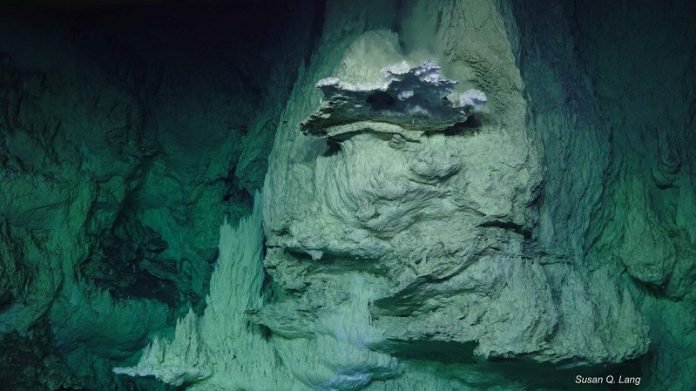
Long before humans discovered the clean energy potential of hydrogen gas, the tiniest life forms on Earth were already experts at using it to fuel their existence.
This gas, which produces water when burned and leaves behind no harmful emissions, has been a source of energy since the very beginning of life.
Now, scientists have made exciting discoveries about how the first cells on Earth harnessed hydrogen from their surroundings to thrive.
Deep in the ocean, in places far removed from sunlight, lie hydrothermal vents.
These vents, resembling otherworldly scenes, are home to ancient microbes that live in complete darkness.
These tiny organisms have a special diet: they consume hydrogen gas produced by the vents and use it to transform carbon dioxide into the building blocks of life.
This process allows them to survive in the harsh conditions of the deep sea, far from the sun’s reach.
A groundbreaking study published in PNAS reveals new insights into how these early life forms managed to use hydrogen as an energy source. Led by researchers William F. Martin from the University of Düsseldorf and Martina Preiner from the Max Planck Institute for Terrestrial Microbiology, the team has uncovered a surprisingly simple method that could have been life’s original battery charger.
Normally, getting energy from hydrogen involves pushing electrons around in a way that’s akin to making a river flow uphill—a challenging task without the right tools.
Scientists discovered a solution to this puzzle 15 years ago, called electron bifurcation.
This process involves splitting hydrogen’s electrons and sending them on different paths, allowing one electron to pull another uphill, like a siphon lifting water.
The recent study, however, shows that in the early Earth’s conditions, specifically at a pH level of 8.5 typical for alkaline hydrothermal vents, no complex proteins were needed to start this process.
Instead, the hydrogen bond simply splits on an iron surface, releasing electrons that could directly energize an ancient biological molecule called ferredoxin.
This finding suggests a much simpler, direct method for early cells to obtain energy from hydrogen before life had evolved complex machinery.
The study highlights the crucial role of metals, particularly iron, in life’s early energy systems.
In environments like hydrothermal vents, where hydrogen is naturally produced, iron from the surrounding rocks could react with hydrogen to create metallic iron surfaces.
These surfaces then played a key role in the early chemistry of life, enabling the simple transfer of electrons needed for energy.
This discovery supports the idea that life may have originated in alkaline hydrothermal vents, which offered the perfect conditions for this chemical process. The presence of metallic iron, produced naturally in such environments, could have been a stepping stone for the evolution of more complex life forms.
This research not only fills a gap in our understanding of life’s origins but also demonstrates that the principles of hydrogen as an energy source have been embedded in the fabric of life since its inception.
It’s a reminder of the power and simplicity of nature’s solutions to energy problems, solutions that modern science is only beginning to rediscover and appreciate.



